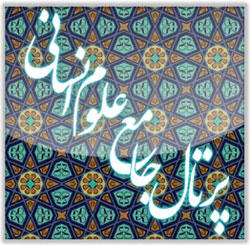Analytical–Statistical Study of Muslims Before the Hijra Based on Religious Beliefs and Gender
Keywords:
Islam , Muslims , Religion , Women, Men , StatisticsAbstract
On the eve of the emergence of Islam, the Arabian Peninsula was the cradle of various religions, and it can be said that at that time a sense of unrest and mental agitation had arisen among the Arabs, preparing the ground for the acceptance of a unified and universal faith. This very condition was a compelling reason for the emergence of a new religion among the Arab people. The diversity of religions and the divergence in belief were such that some Arabs, guided by their pure and enlightened conscience, turned away from idolatry and other prevalent religions of that era and embraced the ḥanīf faith, which was the religion of their ancestors. The new Muslims, both women and men of faith, believed in the Oneness of God and the Prophethood of Muhammad (peace be upon him) and endured numerous hardships in this path. Women, who before Islam had neither status nor dignity, with the advent of this new religion, experienced a revival of spirit in their wounded—and perhaps even lifeless—existence and attained that which was their clear and undeniable right. From the very beginning of its call, Islam granted women great value, and as can clearly be understood from the Qur’anic verses, this principle is evident. In this article, we aim to examine the impact of religious diversity on the spread of Islam and the gender dynamics prevailing in the Arabian Peninsula, and by employing an analytical–statistical method, distinguish Muslims before the Hijra in terms of belief and gender. Finally, through statistical charts, we will present the religious beliefs of Muslims before the Hijra, along with the percentage of acceptance among men and women, and compare each separately.
Downloads
References
Ahmad al-Ali, S. (2008). The State of the Messenger of God (PBUH). Research Institute of Hawza and University.
Akhtab Kharazmi, M. b. A. (1965). Al-Manaqib. Al-Matba'ah al-Haydariyah.
Asgari Vadghani, A. (2012). Encyclopedia of the Companions of the Great Prophet (PBUH). Baqer al-Uloom Research Institute.
Ayenehvand, S. (2003). History of Islam. Daftar-e Nashr-e Maaref.
Baghdadi, M. b. H. (1942). Al-Muhabbar. Al-Matba'ah al-Dairah.
Bal'ami, A. A. M. b. M. (1987). Tarikhnameh Tabari. Nashr-e Now Publications.
Bukhari, M. b. I. (1981). Sahih al-Bukhari. Dar al-Fikr.
Davani, A. (1996). History of Islam. Islamic Publications Office Printing House.
Durant, W. J. (1958). The Story of Civilization. Iqbal Publications.
Ebrahimi Varkiani, M. (2015). Analytical History of Islam from the Beginning to the Event of Taff. Daftar-e Nashr-e Maaref.
Esmaeili, M. (2012). Jahiliyyah Encyclopedia of the Holy Quran. Research Institute of Islamic Sciences and Culture and the Center for Quranic Culture and Knowledge.
Fayyaz, A. A. (2011). History of Islam. University of Tehran Publications.
Gustave Le, B. (1938). Civilization of Islam and the Arabs. Scientific Printing House.
Haddad Adel, G. (2000). Encyclopedia of the Islamic World. Islamic Encyclopedia Foundation.
Hasan, I. (1983). The Political History of Islam. Javidan Publications Organization.
Hashemi Rafsanjani, A. (2005). Quranic Culture. Bustan-e Ketab Institute.
Hitti, P. K. (2002). History of the Arabs. Scientific and Cultural Publications Company.
Ibn Abd al-Barr, Y. b. A. (2001). Al-Isti'ab fi Ma'rifat al-As'hab. Dar al-Kutub al-Ilmiyya.
Ibn Abi al-Hadid, A. H. B. (1958). Sharh Nahj al-Balagha. Dar Ahya Kutub al-Arabiya.
Ibn Athir, A. b. M. (1997). Asad al-Ghaba fi Ma'rifat al-Sahaba. Dar al-Ma'rifah.
Ibn Hibban, M. b. A. (1993). Sahih Ibn Hibban. Mu'assasat al-Risalah.
Ibn Hisham, A. M. (1985). Sirat al-Nabawiyyah. Eslamiyeh Publications.
Ibn Sa'd Katib Waqidi, M. (1995). Farhang and Andisheh Publications.
Jafarian, R. (2003). The Political History of Islam (Sirah of the Messenger of God (PBUH)). Negaresh Publications.
Kalbi, H. b. M. (1969). Al-Asnam. Tabaan Publishing.
Majlisi, M. B. b. M. T. (1983). Bihar al-Anwar. Dar Ahya al-Turath al-Arabi.
Makarim Shirazi, N. (2016). Risalah-e Tozih al-Masa'il. Imam Ali bin Abi Talib (AS) Publications.
Masoudi, A. b. H. (2009). Muruj al-Dhahab wa Ma'adin al-Jawhar. Scientific and Cultural Publications Company.
Mubarakpuri, M. S. a.-R. (2005). Sirah al-Nabi (PBUH). Sheikh al-Islam Ahmad Jam Publications.
Nasiri, M. (2010). Analytical History of Early Islam. Daftar-e Nashr-e Maaref.
Neyshaburi, H. (1985). Al-Mustadrak ala al-Sahihayn. Dar al-Ma'rifah.
Nuvairi, S. a.-D. A. (1985). Nihayat al-Arab fi Funun al-Adab (Vol. Volume 1). Amir Kabir Publications.
Pishvaee, M. (2011). Sirah-e Pishvayan. Imam Sadiq (AS) Institute.
Pishvaee, M. (2012). History of Islam (From Jahiliyyah to the Passing of the Prophet of Islam (PBUH)). Daftar-e Nashr-e Maaref.
Rasouli Mahallati, S. H. (1993). History of Islam (Volume One: From the Emergence of the Arabs to the End of Uthman's Caliphate). Daftar-e Nashr-e Farhang-e Eslami.
Salem, A. (2007). History of Arabs Before Islam. Scientific and Cultural Publications.
Seyyed Javadi, A., Khorramshahi, B., & Fani, K. (2001). Encyclopedia of Shiism. Shahid Saeed Mohebbi Publishing.
Shahidi, S. J. (2016). Analytical History of Islam. University Publication Center.
Tabari, M. i. J. (1983). Tarikh al-Rusul wa al-Muluk. Asatir Publications.
Tabatabaei Ardakani, M. (1989). Analytical History of Islam. Asatir Publications.
Tusi, M. i. H. (2007). Rijal al-Tusi. Islamic Publication Institute of the Society of Seminary Teachers.
Ya'qubi, A. b. I. (2003). Tarikh al-Ya'qubi (Vol. Volume 1). Scientific and Cultural Publications.
Zargari Nejad, G. (1999). History of Early Islam (Prophet's Era). Organization for the Study and Compilation of Human Sciences Books of Universities.
Zeidan, J. (1989). Civilization of Islam and the Arabs. Sadr Library Publications.
Downloads
Published
Submitted
Revised
Accepted
Issue
Section
License
Copyright (c) 2025 Mahmoodreza Zamanloo (Author); Mahboob Mahdavian; Saeeid Hamidi (Author)

This work is licensed under a Creative Commons Attribution-NonCommercial 4.0 International License.







